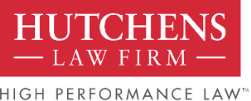Anti-Modification Provision Protecting Mortgages Secured by Principal Residences Affirmed by U.S. Court of Appeals
In a case decided on April 27, 2016, the United States Court of Appeals for the Fourth Circuit, covering the Carolinas, reasserted the integrity of the anti-modification provision of the Bankruptcy Code with respect to mortgages secured by a borrower’s principal residence. In Anderson v. Hancock, 2016 WL 1660178 (4th Cir. April 27, 2016), sellers of a residential property took back a note and deed of trust from the purchasers. The note provided that if the purchasers defaulted on their loan payments the note rate would increase from 5% to 7%. Following default the sellers invoked the rate increase and commenced foreclosure, prompting the purchasers to file a Chapter 13 bankruptcy petition in the Eastern District of North Carolina. The purchasers filed a bankruptcy plan proposing to pay arrears over 60 months and post-petition payments at the 5% rate.
The sellers objected that the rate for both pre-petition arrears and post-petition payments should be at the 7% rate, as determined by the loan agreement. The bankruptcy court agreed, holding that the proposed 5% rate violated 11 U.S.C § 1322(b)(2)’s anti-modification provision applicable to principal residences, rejecting the purchasers’ contention that the increased rate was a consequence of default that bankruptcy could “cure” consistent with § 1322(b)(3) and (b)(5).
On appeal, the district court affirmed the order of the bankruptcy court except in one respect. The district court:
[H]eld that acceleration and foreclosure was a “disjunctive alternative remedy” to the default rate of interest, and that once the Hancocks accelerated the loan, the rate of interest reverted back to five percent. J.A. 71. It held that this period of acceleration (and thus only five percent interest) lasted from September 16, 2013 [the petition filing date] until December 2013 (the effective date of the plan), after which the seven percent rate of interest reactivated due to the bankruptcy plan's deceleration of the loan. In the district court's view, the rate of interest thus seesawed depending on whether the loan was in accelerated or decelerated status.
Anderson, at *2.
On appeal to the Fourth Circuit, the Court of Appeals “agree[d] with the courts below on the basic question, namely that the cure lies in decelerating the loan and allowing the debtors to avoid foreclosure by continuing to make payments under the contractually stipulated rate of interest.” Id.
The Court observed that § 1322(b)(2) “provides that a bankruptcy plan may “modify the rights of holders of secured claims, other than a claim secured only by a security interest in real property that is the debtor's principal residence.”” Id. In addressing the purchaser’s “cure” contention, the Court noted § 1322(b)(3) may “provide for the curing of any default within a reasonable time and maintenance of payments while the case is pending on any unsecured claim or secured claim on which the last payment is due after the date on which the final payment under the plan is due.” Id. at *3, quoting § 1322(b)(3). The Court held that the proposed change to the interest rate was an impermissible modification rather than a permissible cure because otherwise the rate reduction would modify the bargained-for rights, enforceable under state law, expressed in the security agreement, citing Nobleman v. Am. Sav. Bank, 508 U.S. 324, 329, 113 S.Ct. 2106, 124 L.Ed.2d 228 (1993). “Courts have accordingly “interpreted the no-modification provision of § 1322(b)(2) to prohibit any fundamental alteration in a debtor's obligations, e.g., lowering monthly payments, converting a variable interest rate to a fixed interest rate, or extending the repayment term of a note.” In re Litton, 330 F.3d 636, 643 (4th Cir.2003).” Anderson, at *3. The Court found that “[t]he meaning of “cure” thus focuses on the ability of a debtor to decelerate and continue paying a loan, thereby avoiding foreclosure.” Id.
The Court went on to provide an enlightening explanation of why Congress chose to provide enhanced protections for principal residence lenders, and how this protection promotes the mortgage market to the benefit of lender and borrower alike. Addressing the purchasers’ contention that this result is unfair and deprived them of their “fresh start”, the Court observed that the fresh start was the opportunity to escape foreclosure and resume the opportunity to make payments. The ability to impose a default interest rate in this case was a “risk premium” contracted for between the parties and to provide a measure of protection to the lender when the debtor demonstrates behavior that reveals an increased likelihood of loss.
With respect, specifically, to the district court’s premise that the default rate of interest was a “disjunctive alternative remedy” to acceleration and foreclosure, justifying the 5% rate for payments due from September 16, 2013 (the date the petition was filed) to December 2013 (the effective date of the plan), the Court held this was “not a plausible construction of the promissory note.” Id. at *7. The Court observed that [n]othing in the contract indicates that the parties intended for [the] invocation [of the remedy of acceleration and foreclosure] to unravel the earlier, less-severe remedy.” Id.
Published by Hutchens Law Firm on June 15, 2016
